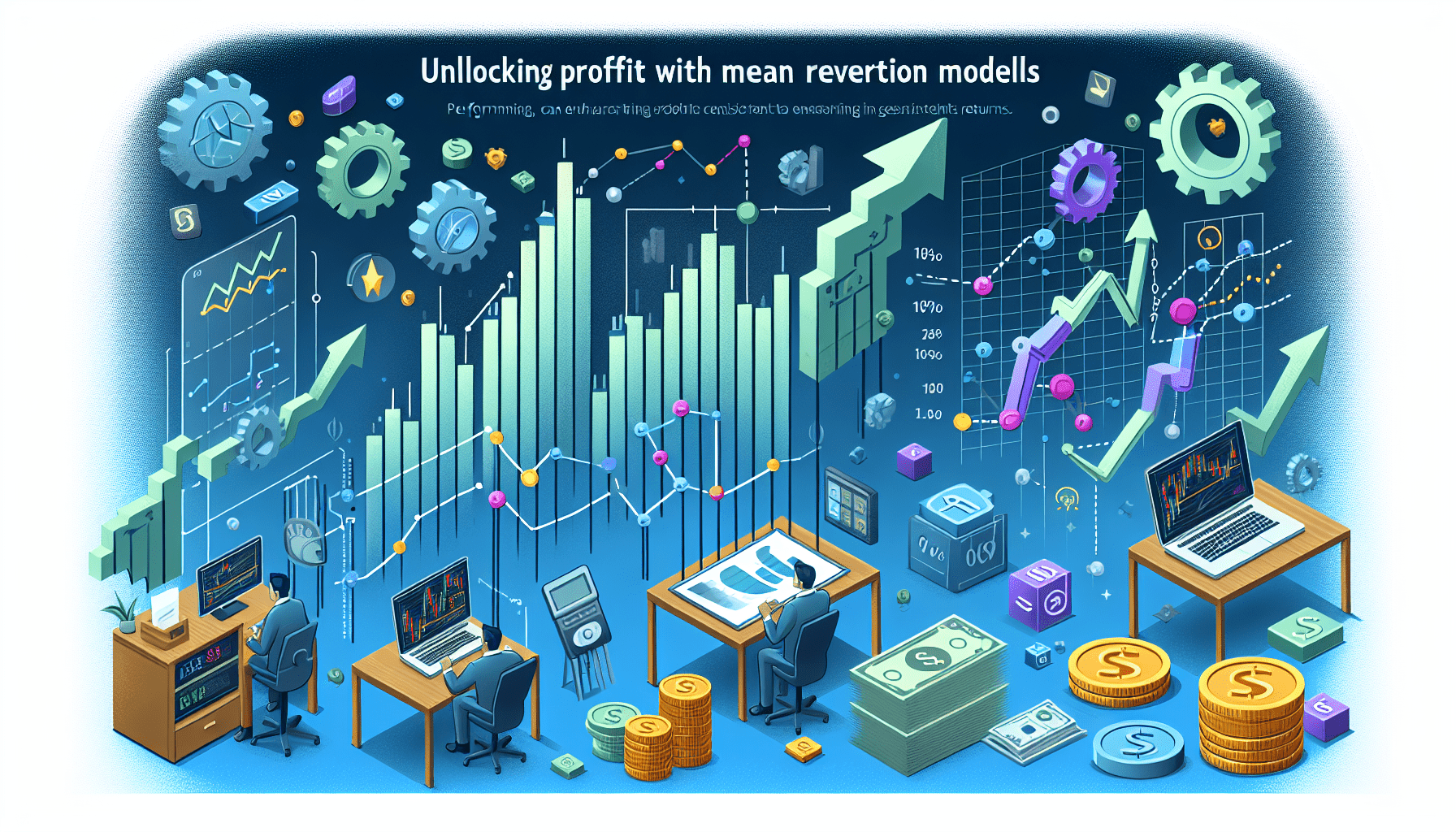Proven Prop Trading Automation: Advanced Tools & Strategies
In today’s fast-paced trading environment, achieving a competitive edge requires more than just intuition—it demands systematic and automated strategies. Prop trading automation has emerged as a game changer, enabling firms and individual traders alike to streamline processes, optimize backtesting, and operate with precision. This comprehensive guide covers advanced insights, tool comparisons, and actionable techniques designed specifically for prop trading professionals looking to propel their strategies into the future.
Why Prop Trading Automation is Critical
The prop trading sector is increasingly competitive, with technology and data-driven strategies front and center. Automation not only facilitates faster execution of trades but also integrates sophisticated backtesting protocols. By automating backtesting, traders can rapidly assess strategy viability using historical data, refine algorithm parameters, and validate robust, out-of-sample performance.
Adopting prop trading automation tools eliminates many manual errors, ensures regulatory compliance, and aligns perfectly with current frameworks like MiFID II, ESMA regulations, and NFA rules. This guide delves into key metrics such as Sharpe Ratios, drawdown limits, and profit factors, essential for evaluating the performance of automated prop trading systems.

Figure 1: Screenshot of a prop trading automation interface displaying backtesting reports and performance metrics.
Advanced Backtesting: Tools and Techniques
Effective automation in prop trading hinges on advanced backtesting methods. However, pitfalls such as overfitting, survivorship bias, and look-ahead bias remain significant challenges. Traders must use robust tools that not only process historical data but also offer features such as walk-forward optimization, automated parameter tuning, and out-of-sample testing.
Walk-Forward Optimization vs. Traditional Backtesting
Traditional backtesting evaluates historical data in a single sweep, often neglecting market regime changes. Walk-forward analysis, on the other hand, partitions historical data into calibration and testing periods, allowing traders to validate strategy performance continuously across different market conditions. This method reduces the risk of overfitting and better simulates real-world dynamics.
Ensuring Data Integrity and Quality
Data is the lifeblood of any automated trading strategy. High-quality tick data, comprehensive historical records, and real-time feeds are essential. For instance, using platforms like TradingView or NinjaTrader ensures extensive coverage across asset classes. These platforms excel with event-driven backtesting, handling commissions and slippage while offering functionality like scenario analysis and stress testing to simulate market shocks.
Comparative Analysis: Top Backtesting & Automation Tools
Several tools stand out in the field of prop trading automation. Here we compare some of the most popular platforms, focusing on their backtesting capabilities, data availability, integration, and pricing structures:
| Tool | Backtesting Features | Data Quality | Integration | Pricing & Use Case |
|---|---|---|---|---|
| TradingView | Vectorized backtesting with custom strategy scripts | Robust historical data; global asset classes | API for brokers and easy integration with third-party analytics | Subscription-based; suitable for both prop firms and retail traders |
| MetaTrader 5 | Event-driven testing, multi-threaded processing | Depth in forex and CFDs; real-time feeds available | Integration with broker APIs and extensive community plugins | Free demo versions; widely used by retail traders |
| NinjaTrader | Advanced customizable backtesting with optimization | Detailed historical and tick data; supports equities, futures, forex | Direct broker connectivity; supports third-party add-ons | Flexible pricing; popular among professional trading desks |
| QuantConnect | Automated parameter optimization and scenario analysis | Diverse asset coverage with extensive historical data | API integration with major brokers; cloud-based analytics | Freemium and subscription plans; caters to quantitative teams in prop firms |
Each tool addresses specific needs in prop trading automation. For example, while MetaTrader 5 is renowned for its event-driven backtesting suitable for forex, NinjaTrader offers a more advanced framework with scalability for professional setups.
Step-by-Step Guide to Implementing Automated Backtesting
Getting started with automated backtesting involves careful planning and methodical implementation. Here are the crucial steps:
- Define Clear Objectives: Outline your strategy goal, risk thresholds, target asset classes, and specific performance metrics such as Sharpe Ratio and maximum drawdown.
- Select the Appropriate Tool: Consider your trading style. Use TradingView for rapid visual analysis, or platforms like QuantConnect for quantitative heavy lifting.
- Data Sourcing: Ensure that the historical data is comprehensive. Be wary of missing values and adjust for corporate actions when testing equities.
- Mitigate Biases: Implement walk-forward optimization, ensure rigorous out-of-sample testing, and consider combining backtesting results with forward testing, such as paper trading models.
Code Example: Automated Backtesting with Backtrader
For quantitative strategists, here’s a simple Python snippet using the Backtrader library to implement a basic moving average crossover strategy:
import backtrader as bt
class SmaCross(bt.SignalStrategy):
def __init__(self):
sma1 = bt.ind.SMA(period=10)
sma2 = bt.ind.SMA(period=30)
crossover = bt.ind.CrossOver(sma1, sma2)
self.signal_add(bt.SIGNAL_LONG, crossover)
cerebro = bt.Cerebro()
data = bt.feeds.YahooFinanceData(dataname='AAPL', fromdate=datetime(2018, 1, 1), todate=datetime(2020, 12, 31))
cerebro.adddata(data)
cerebro.addstrategy(SmaCross)
cerebro.run()
cerebro.plot()
This example illustrates the ease with which advanced trading algorithms can be automated. By adjusting parameters and incorporating risk management rules, the framework can be scaled to test multiple strategies concurrently.
Advanced Tools: Case Study from a Prop Trading Firm
At a leading prop trading firm, a team of senior quants and risk managers faced challenges with traditional backtesting: inconsistent data, overfitting strategies, and slow iteration times. They adopted NinjaTrader for its advanced optimization capabilities and QuantConnect for its robust data and cloud-based scalability. The results were striking:
- Sharpe Ratio Improvement: Strategies saw a 20% increase in risk-adjusted returns.
- Drawdown Reduction: Maximum drawdown was reduced by 15% through rigorous walk-forward testing.
- Enhanced Efficiency: Automated parameter optimization reduced strategy iteration time by over 40%, enabling quicker pivoting in volatile markets.
Such case studies underscore the importance of leveraging advanced automation tools. The strategic integration of robust backtesting processes and real-time data feeds can transform strategy development, ensuring scalability and real-world applicability.

Figure 2: Live performance metrics on an automated trading platform, demonstrating key improvements in risk and return.
Best Practices for Managing Risk and Compliance
Modern prop trading requires more than just automated execution—it demands stringent risk management and regulatory adherence. Strategic risk controls, such as setting stop-loss orders and regularly calibrating exposure limits, are essential. A recommended approach is to couple automated backtesting with forward testing through paper trading to verify simulated outcomes in live conditions.
For risk managers, it is crucial to embed compliance checks and monitor ratios such as profit factor and maximum drawdown. Establishing a detailed risk management checklist, which includes parameters for stress testing and real-time monitoring, can significantly reduce systemic risk while meeting regulatory requirements.
Expert Guidance: Pro Tips & Industry Insights
Pro Tip: Always validate backtesting outcomes with out-of-sample and walk-forward tests. Avoid relying solely on historical performance, as market dynamics constantly shift.
Industry Insight: Integration with platforms like Interactive Brokers and Sierra Chart can offer additional layers of automated reporting and compliance tools, which are invaluable for established prop firms.
Next Steps to Enhance Your Trading Strategy
This guide has provided an in-depth look at prop trading automation—from advanced backtesting features to real-world case studies. To further refine your approach, consider accessing our comprehensive Risk Management Checklist for prop trading, designed to ensure robust compliance and risk assessment.
Additionally, explore our article on Advanced Trading Strategies to complement the insights shared here. Leveraging these resources will enable you to systematically improve risk controls and sharpen your competitive edge.
As of October 2023, technology continues to redefine the boundaries of prop trading. Embrace these advanced tools and methodologies to stay ahead in the evolving market landscape.
Conclusion
Prop trading automation is no longer a luxury—it is a necessity in the contemporary market environment. By integrating advanced backtesting tools, rigorous risk management protocols, and continuous strategy optimization, traders can achieve significant improvements in performance and efficiency.
Implement the strategies discussed today and monitor key metrics like Sharpe Ratio, drawdowns, and iteration times to ensure your trading operations remain robust and compliant. For further insights and expert-level guidance, subscribe to our newsletter and join our upcoming webinar on prop trading innovations.







